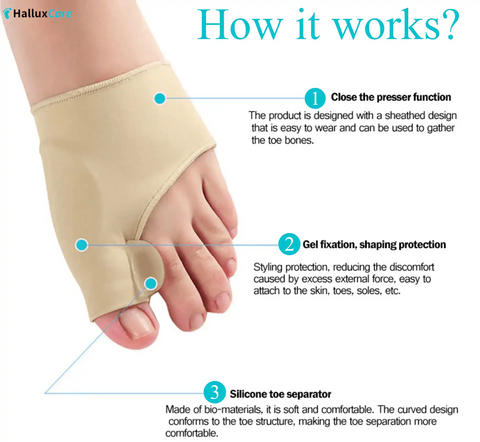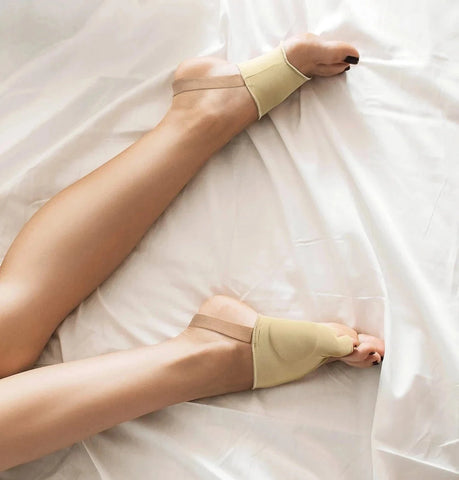Last Updated: 2025-08-24
Author: Dr. Casey Taylor, DPM
Board-Certified Podiatric Physician & Foot Health Writer
Living with Bunions: The Real Impact on Daily Life
Bunion pain relief is a hot topic for many, as highlighted by a recent Reddit comment that resonated with countless sufferers. The user shared, “Zero %. It was all about the pain and interference with my daily life. I've had bunions since early childhood thanks to flat feet. I always knew my feet were different, but it didn't become an issue until it slowed me down from pain.” This honest perspective sheds light on how bunions go beyond cosmetic concerns—they can truly disrupt daily routines and quality of life.
Let’s explore the realities of bunion discomfort, its root causes, and practical, doctor-recommended solutions for managing pain and preventing progression.
What Are Bunions and Why Do They Hurt?
Bunions, medically known as hallux valgus, are bony bumps that form at the base of the big toe. They often develop due to genetics, flat feet, or wearing ill-fitting shoes. According to the American Academy of Orthopaedic Surgeons (AAOS), bunions are one of the most common forefoot deformities and can cause significant pain and functional limitations (AAOS, 2022).
Key points:
- Bunions can cause severe pain, swelling, and redness (Mayo Clinic, 2024).
- They may limit mobility and make walking or standing uncomfortable.
- Early onset is common in people with flat feet or a family history of bunions (APMA, 2024).
Why Is Pain the Main Issue?
While some worry about appearance, the primary struggle is persistent pain that interferes with activities like walking, exercising, or even standing for long periods. This pain is typically due to inflammation of the soft tissue and changes in foot mechanics (Johns Hopkins Medicine, 2024).
How Bunions Disrupt Daily Life
Living with bunions can be challenging. Here’s how they often impact everyday routines:
- Limited Footwear Choices: Comfort becomes the top priority, often leading to unattractive shoe options.
- Reduced Activity: Pain may discourage walking, running, or participating in sports.
- Sleep Disturbances: Throbbing pain can persist even at rest.
- Self-Consciousness: While pain is the main issue, some feel embarrassed about the appearance of their feet.
The Emotional Toll
Chronic pain can lead to frustration, irritability, and even anxiety about future mobility. Studies show that chronic foot pain can impact mental health and overall quality of life (Journal of Foot and Ankle Research, 2021).
4.9 ⭐⭐⭐⭐⭐ ( 1843 reviews )
Managing Bunion Pain: What Really Works?
You don’t have to suffer in silence. Here are evidence-based bunion pain relief strategies, many recommended by podiatrists:
1. Orthopedic Solutions
- Bunion sleeves: Provide cushioning, reduce friction, and help realign the toe (APMA, 2024).
- Toe spacers: Separate the toes to relieve pressure and prevent overlapping.
- Supportive insoles: Address flat feet, a common bunion cause, and redistribute weight.
2. Lifestyle Adjustments
- Choose wide, supportive shoes: Avoid high heels or narrow toe boxes to reduce pressure (Mayo Clinic, 2024).
- Maintain a healthy weight: Less weight means less pressure on your feet.
- Apply ice: Reduces swelling and inflammation after long days.
3. Professional Help
- Podiatrist assessment: Essential for severe or persistent pain, or if conservative treatments fail.
- Physical therapy: Targeted exercises can improve foot strength and joint mobility (AAOS, 2022).
Real Relief, Real Results
Many users have found comfort in specialized products designed for bunion pain relief. For example, the Orthopedic Bunion Pain Relief & Correction Sleeve offers targeted support and gentle correction, making daily life more manageable.
Key Takeaways
- Bunions are more than a cosmetic issue: Pain and mobility limitations are the biggest concerns for most sufferers.
- Evidence-based treatments are available: Orthopedic devices, proper footwear, and lifestyle adjustments can significantly reduce symptoms.
- Professional input matters: See a podiatrist for personalized evaluation, especially if pain persists.
- Mental health matters: Chronic pain can impact emotional wellbeing—don’t hesitate to seek support.
Practical Tips & Real-World Applications
- Shop for shoes in the late afternoon: Feet tend to swell throughout the day, ensuring a better fit.
- Use silicone pads or sleeves for all-day protection: Especially helpful if you’re on your feet a lot.
- Keep a pain diary: Note what activities trigger symptoms to help guide treatment choices.
- Stretch your feet daily: Gentle toe stretches can help maintain joint mobility.
- Alternate footwear: Don’t wear the same pair every day—rotate to reduce pressure spots.
HalluxCare Bunion Products
If you're looking for relief from bunion pain, consider using the Orthopedic Bunion Pain Relief & Correction Sleeve, which provides support and helps to alleviate discomfort.
For additional protection, the Tailor's Bunion Bunionette Pain Relief Protection Sleeves are designed to offer comfort and protection for bunionette pain.
To nourish and soothe the skin around bunions, as well as to promote healthy hair, consider the Jamaica Black Castor Oil Soothing Oil. Known for its moisturizing and anti-inflammatory properties, it helps alleviate discomfort around bunions and supports hair growth and scalp health.
Frequently Asked Questions (FAQs)
Q: Can bunions go away on their own?
A: No, bunions do not resolve without intervention. Conservative treatments can manage symptoms, but surgery is the only way to remove a bunion (AAOS, 2022).
Q: Are bunion sleeves effective?
A: Yes, for many people, bunion sleeves provide significant pain relief and protection from shoe friction, though they do not correct the underlying deformity (APMA, 2024).
Q: When should I see a doctor about my bunion?
A: If pain interferes with daily activities, or if you notice rapid progression or signs of infection (redness, pus, fever), consult a podiatrist promptly.
Q: Can exercises really help?
A: Foot-strengthening and stretching exercises can help relieve symptoms and slow progression, especially in early stages (Johns Hopkins Medicine, 2024).
Q: Is surgery necessary for everyone with a bunion?
A: No, surgery is generally reserved for severe cases that don’t respond to conservative treatment.
Disclaimers & Disclosures
- This article is for informational purposes only and does not substitute for professional medical advice. Always consult your healthcare provider before starting any new treatment.
- Some links in this article are to HalluxCare products, from which we may earn a commission if you make a purchase. Product selections are based on published research and clinical best practices.
- Product ratings, photos, and links have not been altered.
Don’t Let Bunions Slow You Down
Bunions can be a lifelong companion, but pain doesn’t have to be. By understanding causes and prioritizing pain management, you can regain control over your daily life.
What has been your experience with bunion pain? Has it changed your lifestyle or activity level? Share your story in the comments below—we’d love to hear your tips and challenges!
Are you ready to take the first step toward pain-free feet? Let’s start the conversation below!
References:
- American Academy of Orthopaedic Surgeons. “Bunions (Hallux Valgus).” OrthoInfo, 2022.
- Mayo Clinic. “Bunions: Symptoms and Causes.” MayoClinic.org, 2024.
- American Podiatric Medical Association. “Bunions.” APMA.org, 2024.
- Johns Hopkins Medicine. “Bunions.” HopkinsMedicine.org, 2024.
- Journal of Foot and Ankle Research. “The impact of chronic foot pain,” 2021.




